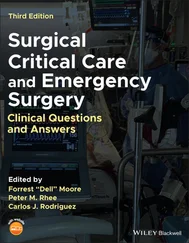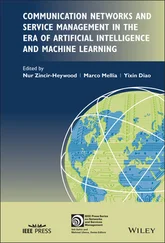It is often challenging for the emergency/critical care clinician to troubleshoot and, sometimes, even identify the problems with many of these hi‐tech devices. Moreover, specialized consultation is not always readily available. It is quite challenging for providers to recall complex diagnostic and therapeutic algorithms for patients with specialized equipment, thus increasing the risk for morbidity and mortality. This guide provides a stepwise approach to acute presentations of patients with clinical hardware, focusing on specific instructions for initial evaluation and management. Our intent is that this endeavor will assist health care providers in both community settings and academic centers in the treatment of complex patients with “hi‐tech” equipment.
It is our sincere hope that this book will improve the quality of care to our unique patient population who utilize specialized hardware. Our goal is to provide our readers with an overview of the basic approach to clinical scenarios of device malfunction and related complications of the most commonly used medical devices. However, as it was impossible to include all devices in this book, the practitioner should make every effort to ensure they have the most accurate information for each patient's hardware.
We want to thank our fellow editors, authors, and contributors, who gave their time selflessly so that we could produce this book. Also, we would like to thank our teachers, mentors, and colleagues, from whom we learn every day. Most importantly, the real source of our inspiration, our patients and their families, deserve our eternal heartfelt gratitude.
Ioannis and Nick
I would like to thank Nick and all the editors of the book, as, without them, this effort would not have been possible. Nick’s support was really amazing, and his help with some of the problems we faced during the creation of the book really made a difference. As a great clinician, researcher, and educator, Nick’s contribution was vital for the whole project. Jill, Mike, Rich, and Rob went above and beyond to have all the chapters completed on time and make sure the content was appropriate. Thank you all!
I want to dedicate this book to my mother who, despite all the difficulties, never left my side. She has been my inspiration all these years. Also, to Dr. Levinsky, who discussed the initial idea for the book with me. And finally, to all the people in my life who made a difference, thank you!
Ioannis Koutroulis
I’d like to first acknowledge, Ioannis, the creator of the book and our persevering leader. Through thick and thin, Ioannis remained upbeat and encouraging. Ioannis stayed enthusiastic, despite delays as a result of our heavy administrative and clinical workloads due to sustained high volumes and acuities in our emergency departments (EDs), inpatient areas, and intensive care units. With an eternally positive attitude, he even respectfully pushed us through a pandemic toward the completion of the “Hi-Tech Book” project. Thank you, Ioannis! My most genuine love and appreciation goes to my family – wife Debbie, my son Christopher, and my daughter Nicole. The importance of their continual support of my long ED shifts, constant meetings, and endless “homework” cannot be understated. They have forever tolerated “Daddy” in his study … reading, writing, typing, answering pages, making phone calls, etc. Finally, a special thank you to my mother who, with little education and even less money, somehow managed to raise three pretty good kids. Love you, mom.
Nick Tsarouhas
To my parents, who raised me to believe I can do anything.
To my mentors, who have showed me the way.
To my patients, who have inspired and humbled me.
And to my husband and daughters, my loves and light.
Jill C. Posner
Section I Gastro‐intestinal Devices
1 Using and Troubleshooting Enteral Feeding Devices
Courtney E. Nelson1,2 and Thane A. Blinman3,4
1 Division of Emergency Medicine, Department of Pediatrics, AI DuPont Hospital for Children, Wilmington, DE, USA
2 Sidney Kimmel Medical College at Thomas Jefferson University, Philadelphia, PA, USA
3 Division of General and Thoracic Surgery, Department of Surgery, Children’s Hospital of Philadelphia, Philadelphia, PA, USA
4 Perelman School of Medicine at the University of Pennsylvania, Philadelphia, PA, USA
Enteral feeding devices deliver nutrition directly to the stomach and/or small intestine for patients with anatomic or physiological feeding impairments. Common indications for enteral feeding devices include feeding and swallowing dysfunction, severe gastroesophageal reflux, malnutrition, neurological disorders, and prolonged ventilation. Given the breadth of indications for enteral feeding devices, a clinician in any setting, and particularly those in the emergency department, is likely to encounter these devices on a daily basis. These are simple devices with a simple purpose, but their dysfunction is highly disruptive and worrisome to patients and their caregivers. This chapter will teach you how to manage the simplicity of a working enteral feeding device and navigate the intricacies of an unruly device.
Enteral feeding devices can be categorized into temporary and long‐term devices. Furthermore, the name for each device comes from its origin (nose, mouth, or stomach) and terminus (stomach or small intestine) ( Table 1.1). Nasal and oral tubes are temporary and work well for patients with transient feeding difficulties. Gastrostomy tubes (G‐tube) and jejunostomy tubes (J‐tube) are ideal for more long‐term or permanent enteral nutrition. Enteral feeding devices are sized in French (Fr) units, which is the outer diameter of the tube in millimeters multiplied by three. A 9 Fr tube, for example, has an outer diameter of 3 mm. Tube lengths are usually given in centimeters and vary widely from very short low profile “button” type tubes to very long naso‐jejunal (NJ) tubes.
Table 1.1Enteric feeding devices.
| Origin |
Destination |
Tube |
Abbreviated |
Placement |
| Temporary feeding devices |
| Nose (naso‐) |
Stomach (gastric) Duodenum Jejunum |
Naso‐gastric Naso‐duodenal Naso‐jejunal |
NG ND NJ |
Bedside |
| Mouth (oro‐) |
|
Oro‐gastric |
OG |
Bedside |
| Long‐term feeding devices |
| Percutaneous |
Stomach Jejunum |
Gastric aGastro‐jejunostomy Jejunostomy |
G‐tube GJ J‐tube |
Surgically or endoscopically Fluoroscopically Fluoroscopically |
aCommonly, these tubes are called “PEG tubes”; however, a percutaneous endoscopic gastrostomy is a procedure and not a specific tube.
Temporary Feeding Devices
Naso‐gastric (NG), naso‐duodenal (ND), NJ, and oro‐gastric (OG) feeding tubes are used for short‐term enteral feeding, defined as that less than 12 weeks. OG tubes are reserved for patients in the intensive care unit and rarely seen in the emergency department. Temporary feeding tubes are typically constructed from polyurethane or silicone‐based polymers, both of which are flexible, reasonably durable, minimally reactive biologically, and, for most, immunologically inert. Polyurethane tubing has the added benefit of being made with a water‐activated lubricant to ease insertion and increased durability. Depending on the manufacturer, NG, NJ, ND, and OG tubing may come with weighted tips, radiopaque indicators, stylets, and/or magnets to help with placement. Common pediatric tube size for feeding is a 6–8 Fr and for adults a 12–14 Fr.
Читать дальше












